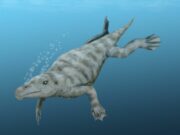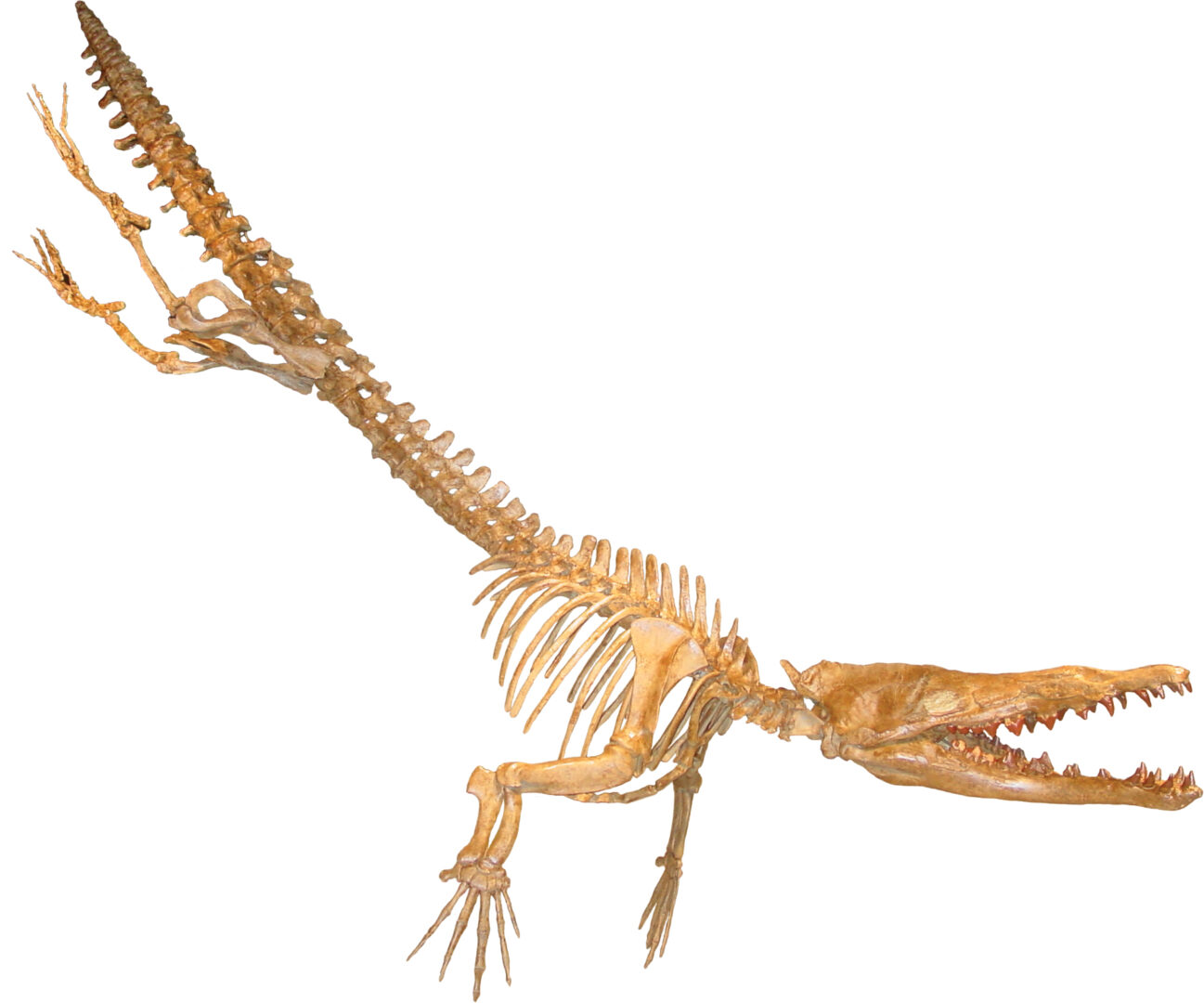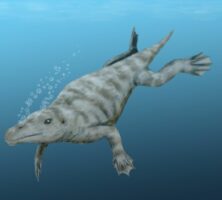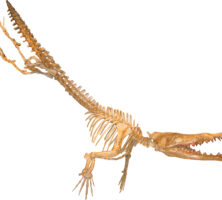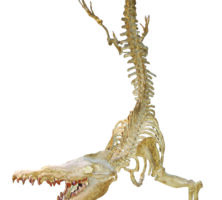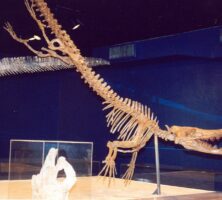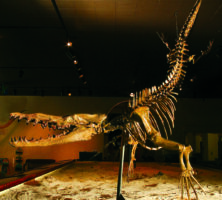Georgiacetus vogtlensis, a species of advanced proto-whale previously unknown to science, was discovered in east Georgia in 1983. That year the fossils of three individual Georgiacetus whales were unearthed in 40-million-year-old sediments during the construction of Plant Vogtle, a Georgia Power Company nuclear facility in Burke County. Researchers named the fossils Georgiacetus vogtlensis, meaning the “Georgia Whale from Plant Vogtle.” Current research suggests that all modern whales, including the North Atlantic right whale (Eubalaena glacialis Müller), Georgia’s state marine mammal, are descended through Georgiacetus. A reconstruction of Georgiacetus can be seen at the Georgia Southern Museum in Statesboro.
Initial Discovery
The fir st discovery consisted of approximately sixty bones belonging to a single adult individual. Researchers from Georgia Southern University collected the nearly complete skeleton, along with the surrounding matrix, which allowed for accurate dating of the bones. A research team led by vertebrate paleontologist Richard C. Hulbert, then at Georgia Southern, later confirmed the find as the most recent and advanced proto-whale yet discovered. The find included a nearly complete skull, both lower jaws, twenty-plus vertebrae, several ribs, and the pelvic bones. No leg or tail material was discovered. The living animal was estimated to be eleven feet long based on the skull, which was almost thirty inches long. As the nuclear plant construction continued, the fossils of two more individuals emerged: a single forward vertebra from a second whale, and three forward vertebrae, four partial ribs, and a partial tooth from a third whale.
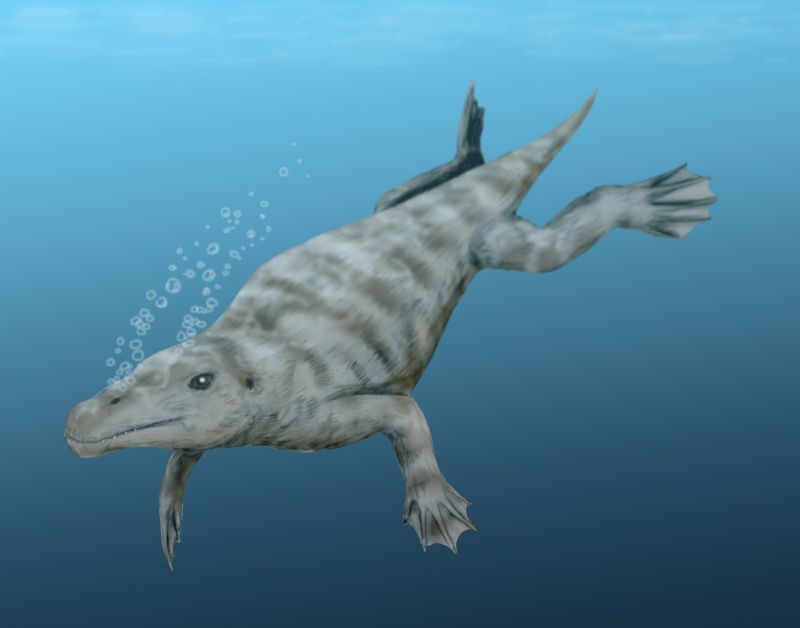
Photograph by Nobu Tamura
These fossils do not indicate a beach stranding. Forty million years ago, during the Paleogene period, the sea level of the Atlantic Ocean was much higher than it is now, and the Georgia shoreline rested on, or near, the fall line, which today runs across the state from Augusta to Columbus. The Suwannee Current, a powerful prehistoric ocean current, crossed what is now south Georgia and powered a fertile southeastern sea. During this period, when Georgiacetus was living, the location of Plant Vogtle was submerged about thirty miles offshore, well south of the prehistoric shoreline.
Physical Characteristics
The earliest proto-whales emerged about 55 million years ago in Asia’s extinct Tethys Ocean, half a world away from Georgia. Two species known to have occurred in North America between 45 and 40 million years ago—Carolinacetus gingerichi and Georgiacetus—show shared ancestry with the Asian fossils, based on skull and tooth arrangement. Carolinacetus gingerichi is slightly older than Georgiacetus and possesses a similar, though simpler, tooth arrangement. The skulls of the two species are closely related, and Georgiacetus likely emerged from Carolinacetus. The arrival of Georgiacetus in the present-day southeastern United States shows that proto-whales were capable of deep-water crossings.
For years it was assumed that proto-whales possessed primitive flukes, or tail fins. In fossils from older proto-whales, the pelvic bones are fused to the spine, suggesting that these earlier mammals were amphibious, or able to live on land and in water. Like modern whales, the pelvis of Georgiacetus is not fused to the spine, indicating that the pelvis was only supported by muscle and so probably could not support the animal’s weight out of the water. This muscle and bone configuration suggests that Georgiacetus was fully marine. The pelvis also shows distinct, well-formed sockets where the hind legs had attached, leading scientists to believe that Georgiacetus also had well-developed hind legs.
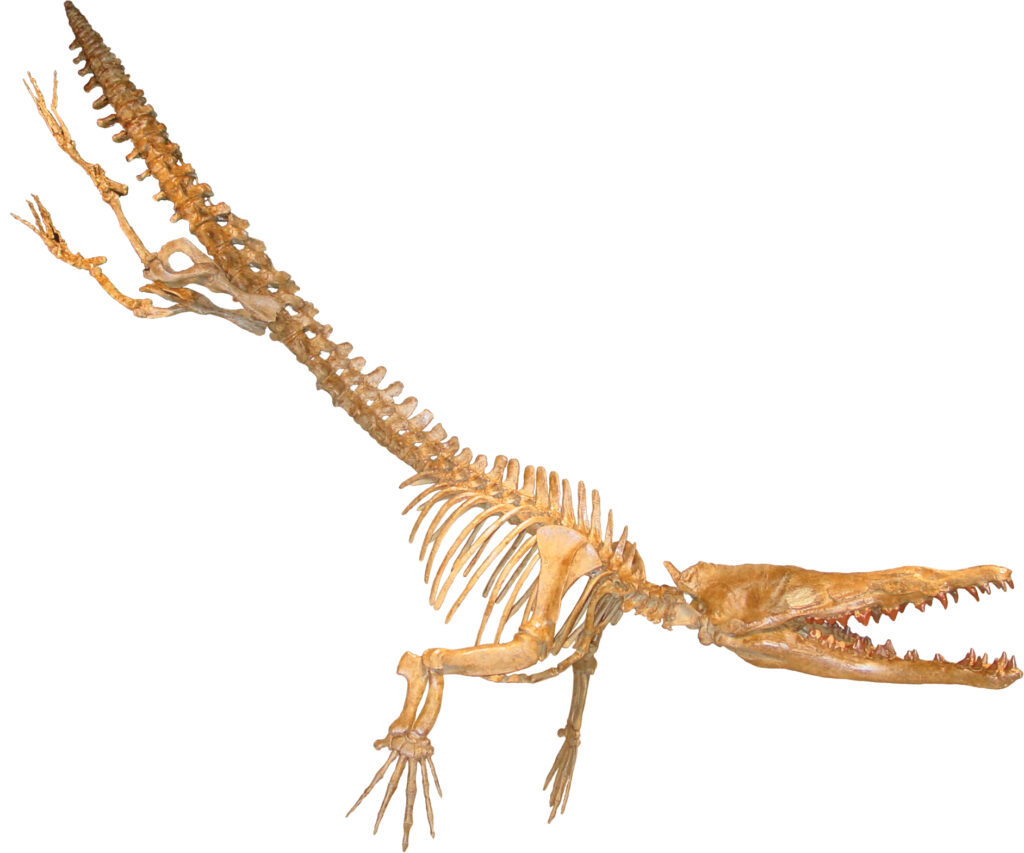
Courtesy of Georgia Southern University Museum
In 2008 Mark D. Uhen, who was affiliated with the Smithsonian Institution’s National Museum of Natural History in Washington, D.C., reported new findings of Georgiacetus fossils in Alabama and Mississippi which included unique caudal vertebrae. In modern whales the last few vertebrae, which support the flukes, are distinctly compressed and simplified. Flukes themselves have no bones and are formed by fibrous tissue. The smallish end-of-tail vertebra reported by Uhen did not show the compressed and simplified structure associated with modern whale flukes. Based on this evidence, researchers concluded that Georgiacetus lacked flukes and swam using its hind legs. This research was published in the Journal of Vertebrate Paleontology.
Based on his work with the Georgiacetus fossils, Uhen identified a new clade, which is a group of animals descended from a common ancestor. He called the new clade Pelagiceti, meaning “Sea Whale.” Pelagiceti has Georgiacetus as its common ancestor and includes all whales up to the emergence of the baleen whales, 25 million years ago.
Modern Whales
The transitions leading to the emergence of modern whales likely occurred in the sea that once covered the southeastern United States. The earliest vertebrae arrangement for flukes occurred 3 million years after Georgiacetus with the highly successful basilosaurids, a family of prehistoric whales that includes the species Zygorhiza, Durodon, and Basilosaurus. Now extinct, these marine mammals (cetaceans) established a worldwide presence in warm water and are considered to be the first modern whales. They possessed flukes as well as tiny and atrophied hind legs.
The more advanced basilosaurid skull is very similar to that of Georgiacetus and likely originated through the Georgia whale. Baleen whales branched off from the descendants of basilosaurids. Thus, it is likely that all modern whales descended from Georgiacetus, through the basilosaurids.


